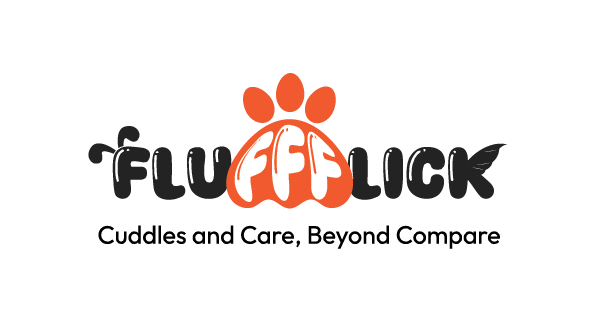Choosing the right diet for your dog or cat is a crucial part of keeping them healthy, happy, and energetic. With numerous options available—from raw food diets to commercial pet food—it can be overwhelming to decide what’s best for your furry companion. In this article, we will explore what is the best diet for dogs and cats, while considering the needs of pets with sensitive stomachs, and whether a grain-free diet is right for your pet.
1. What is the Best Diet for Dogs?
The best diet for dogs depends on their age, breed, size, and overall health. Generally, a balanced diet should include:
- High-quality protein: Dogs thrive on protein sources like chicken, beef, turkey, lamb, and fish. Protein is essential for muscle development and energy.
- Healthy fats: Omega-3 and Omega-6 fatty acids, found in fish oil and flaxseed, help support healthy skin, a shiny coat, and proper brain function.
- Carbohydrates: While dogs can digest carbs, they do not need large amounts. Complex carbohydrates from whole grains or vegetables can provide energy and fibre for digestion.
When selecting dog food, it’s important to ensure it meets the nutritional guidelines set by the Association of American Feed Control Officials (AAFCO), as this guarantees balanced nutrients. Whether you opt for dry kibble, wet food, or a combination of both, make sure the first ingredient is a quality protein source.
2. Cat Nutrition Tips for a Healthy Life
Cats are obligate carnivores, meaning they require a meat-based diet to thrive. Cat nutrition tips for a healthy life include:
- High-protein meals: Cats need animal-based protein from sources like chicken, turkey, or fish. Taurine, an amino acid found in meat, is essential for heart and eye health.
- Moisture-rich food: Cats naturally get most of their hydration from their diet, as they don’t have a strong thirst drive. Wet cat food or adding water to dry kibble can help ensure proper hydration.
- Essential fatty acids: Omega-3 fatty acids support a cat’s coat, skin, and overall health.
Avoid feeding your cat food high in carbohydrates, as they don’t metabolize them well. A high-protein, low-carb diet helps maintain a cat’s ideal weight and reduces the risk of diabetes.
3. Best Pet Food for Sensitive Stomachs
For pets with sensitive stomachs, it’s crucial to choose easily digestible food with limited ingredients to avoid triggering digestive issues like vomiting, diarrhoea, or flatulence. The best pet food for sensitive stomachs often includes:
- Single-source protein: Instead of mixed proteins, opt for food that focuses on one source like lamb or salmon, which is gentler on the digestive system.
- Limited-ingredient diets: Fewer ingredients mean there’s less chance of allergies or intolerances. Look for foods that contain simple, high-quality ingredients.
- Probiotics: These can help balance gut health and improve digestion.
Many brands now offer specially formulated foods for sensitive stomachs, ensuring your pet gets the nutrients they need without digestive discomfort.
4. Raw Diet vs. Commercial Pet Food
A popular debate among pet owners is whether to feed their pets a raw diet vs. commercial pet food. Each has its pros and cons.
- Raw Diet: A raw diet typically consists of raw meat, bones, fruits, and vegetables. Proponents argue that it mimics what dogs and cats would eat in the wild, providing a more natural and nutrient-dense diet. Raw food advocates claim it improves coat health, energy levels, and digestion.
- Pros: High in protein, less processed, and free from artificial additives.
- Cons: Can be time-consuming to prepare, expensive, and carries a risk of bacterial contamination if not handled correctly.
- Commercial Pet Food: Commercial kibble or canned food is convenient, affordable, and nutritionally balanced according to regulatory standards.
- Pros: Readily available, balanced nutrition, and meets safety standards.
- Cons: May contain fillers, artificial preservatives, and lower-quality protein.
If you’re considering a raw diet, it’s essential to work with a veterinarian to ensure your pet is receiving all the necessary nutrients in the right amounts.
5. Grain-Free Diet for Pets: Pros and Cons
Grain-free diets have become increasingly popular, with claims that they are closer to a pet’s ancestral diet and better for pets with allergies. However, the grain-free diet for pets pros and cons needs to be carefully considered.
- Pros:
- Fewer allergens: Grain-free diets may benefit pets with grain allergies or intolerances, leading to better digestion and fewer skin issues.
- High protein content: Many grain-free foods are higher in protein, which can help maintain muscle mass and energy levels.
- Cons:
- Potential health risks: Recent studies have suggested a possible link between grain-free diets and heart disease (dilated cardiomyopathy) in dogs. While the research is ongoing, it raises concerns.
- Unnecessary for most pets: Grains like rice, oats, and barley can be easily digested by most pets and provide essential nutrients like fibre.
Before switching to a grain-free diet, consult your vet to see if it’s the right choice for your pet.
Conclusion
When it comes to pet nutrition, there’s no one-size-fits-all solution. Whether you’re feeding your dog or cat a commercial diet, considering a raw diet, or addressing specific needs like a sensitive stomach, it’s essential to choose a diet that supports their overall health and well-being. Consult with your vet to find the best diet tailored to your pet’s unique needs, ensuring they live a long, healthy, and happy life.

